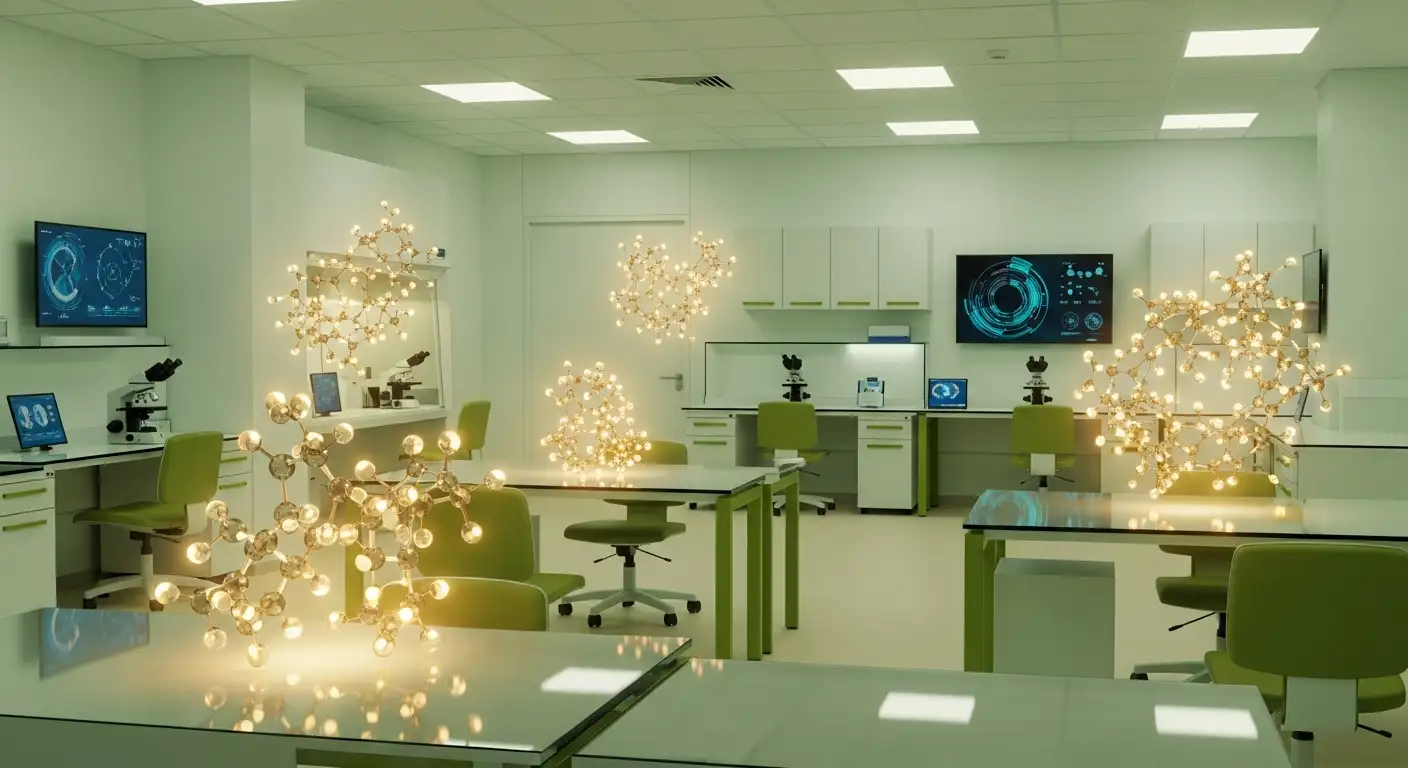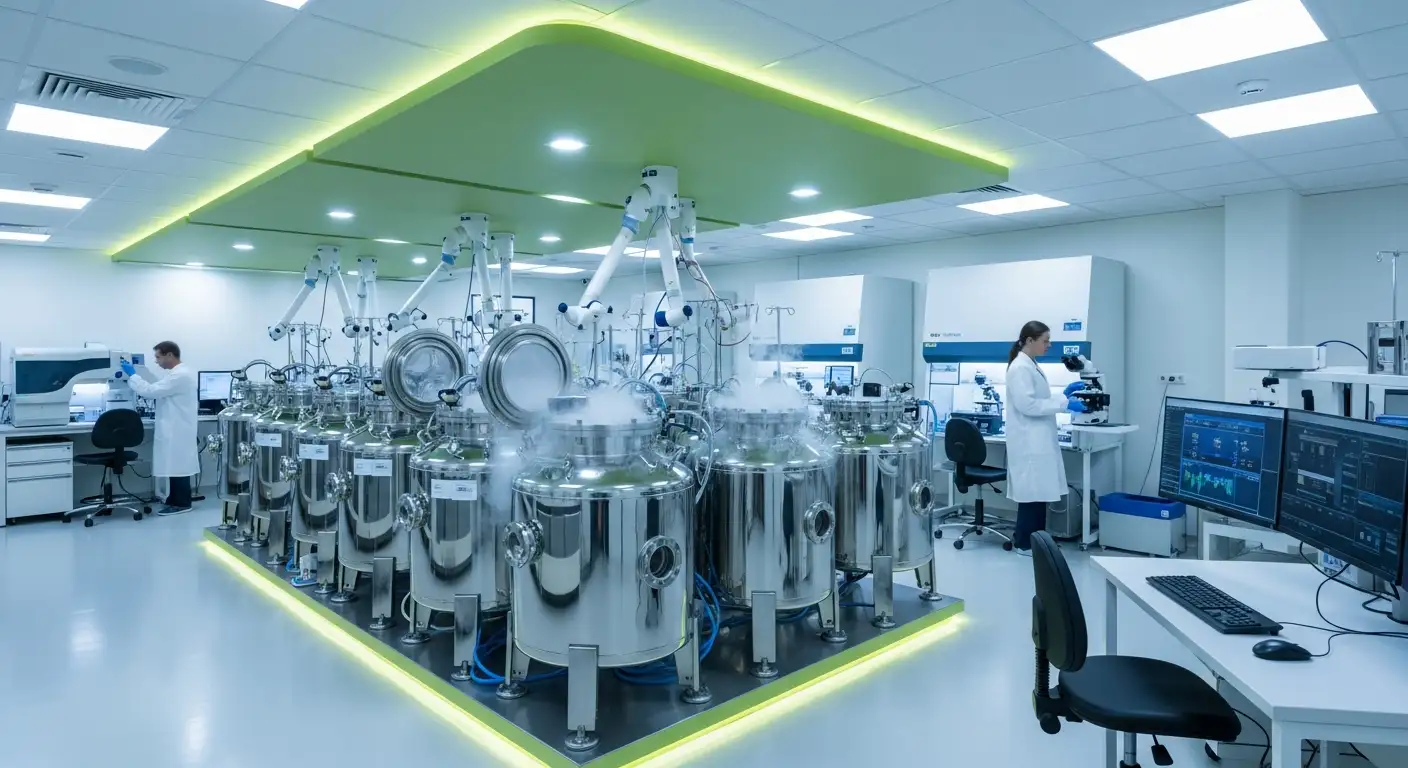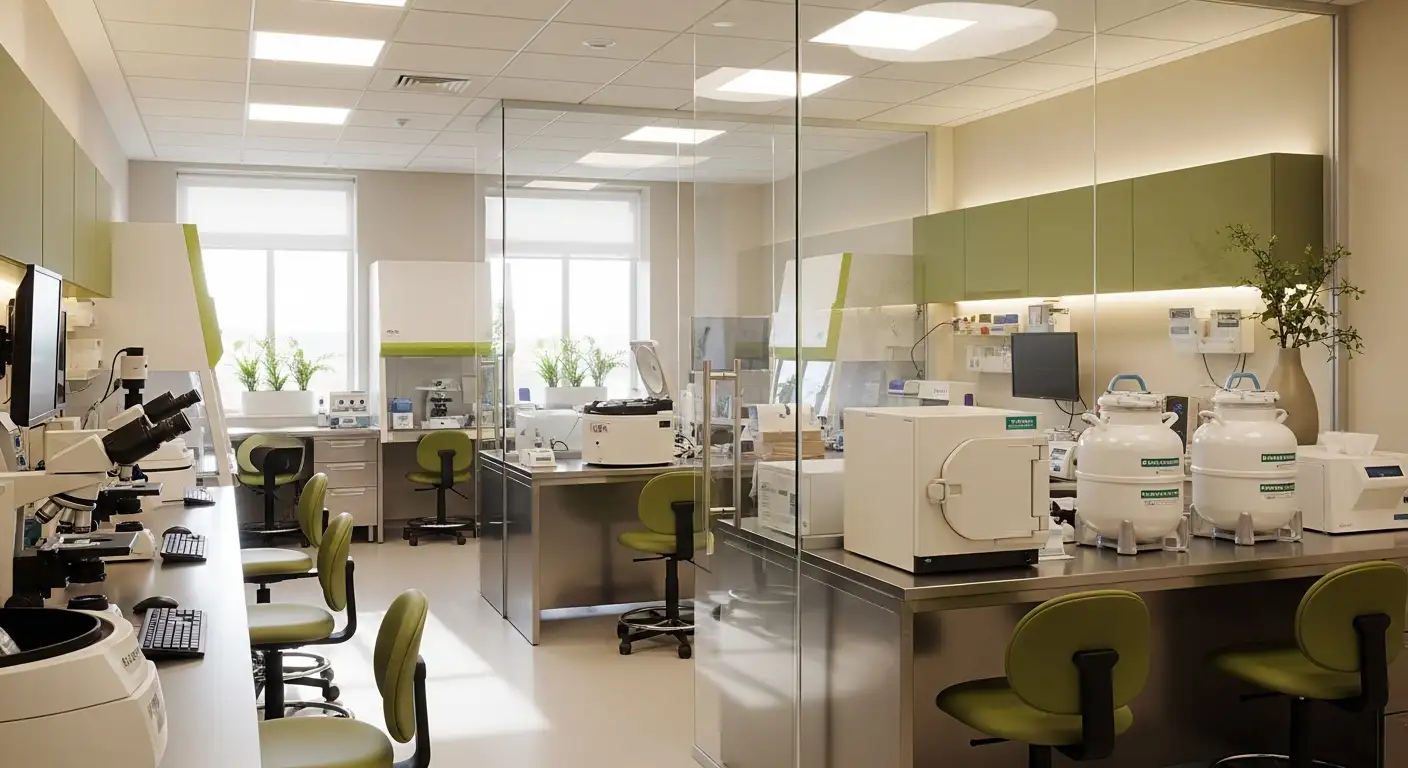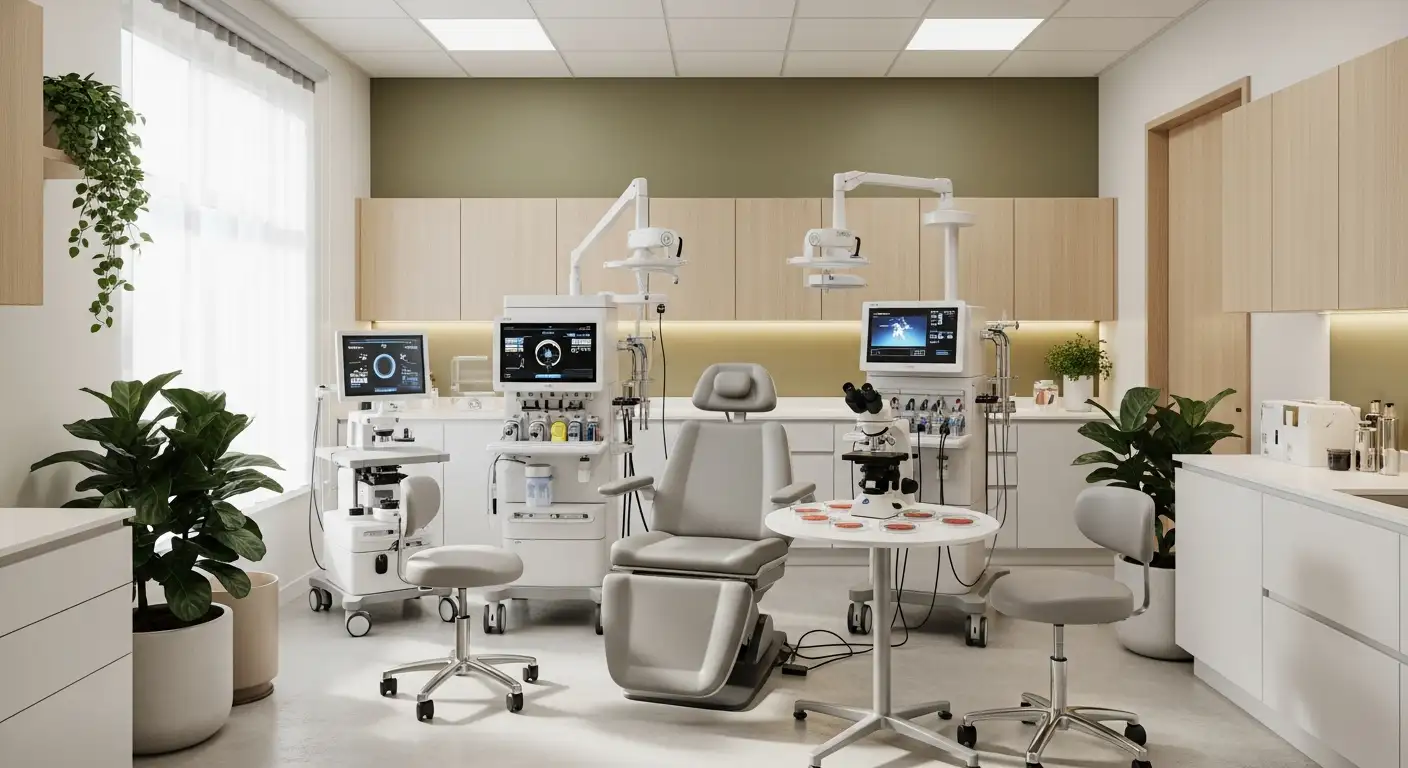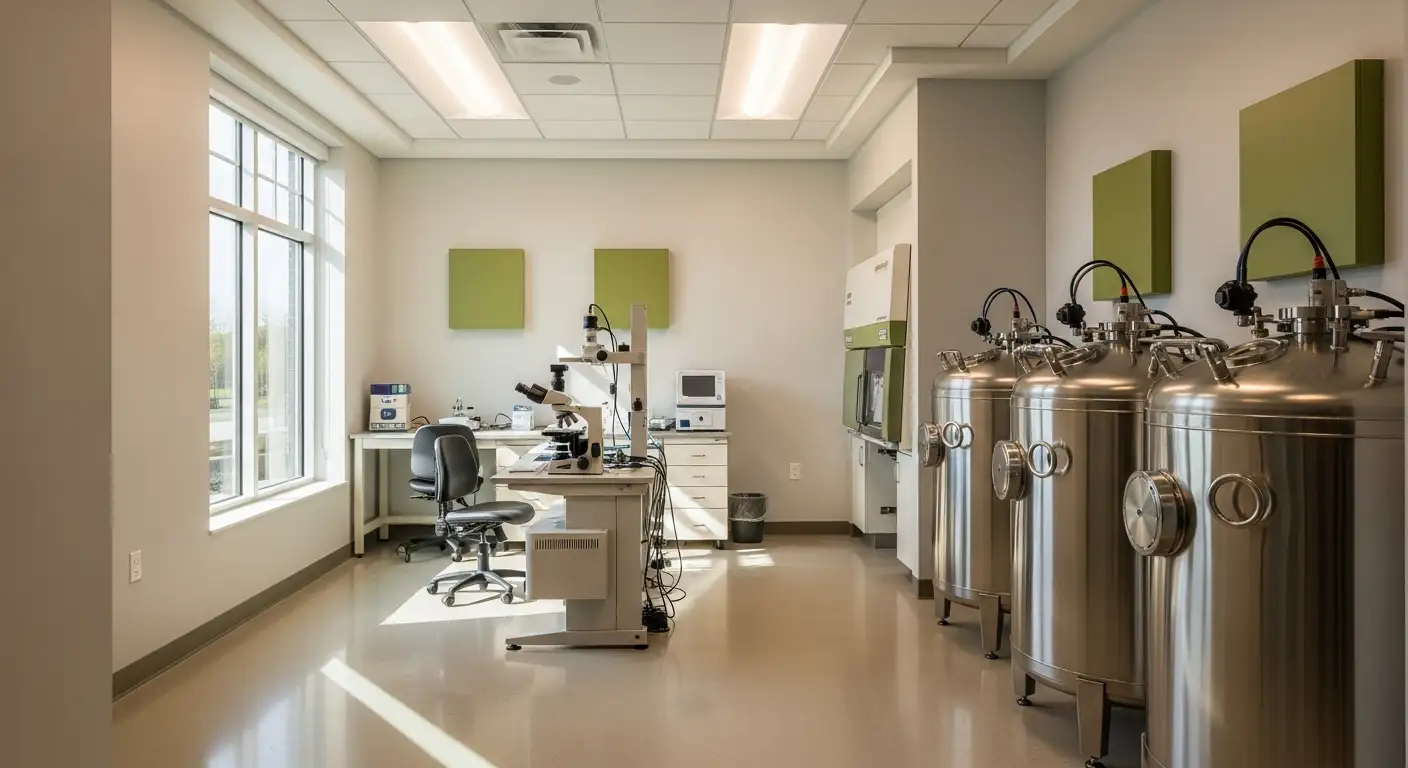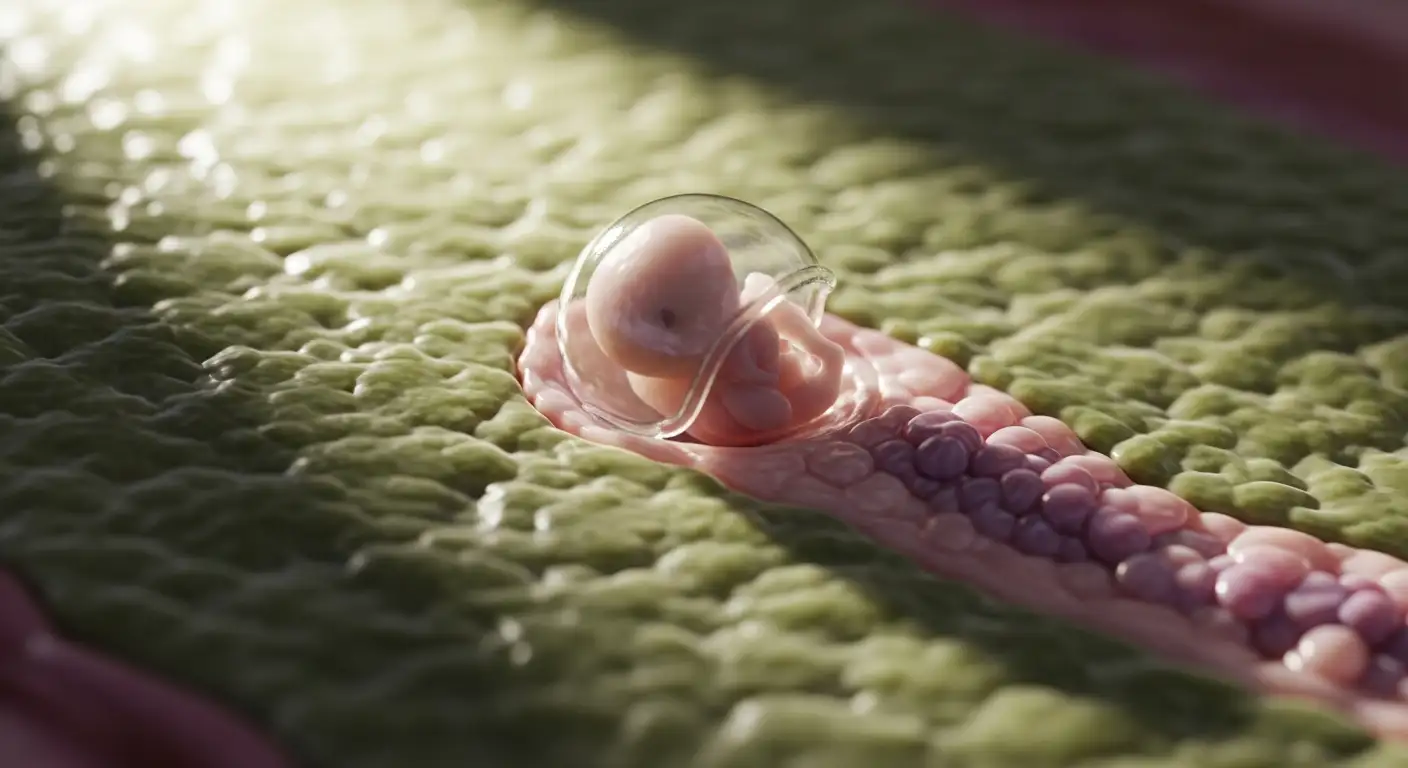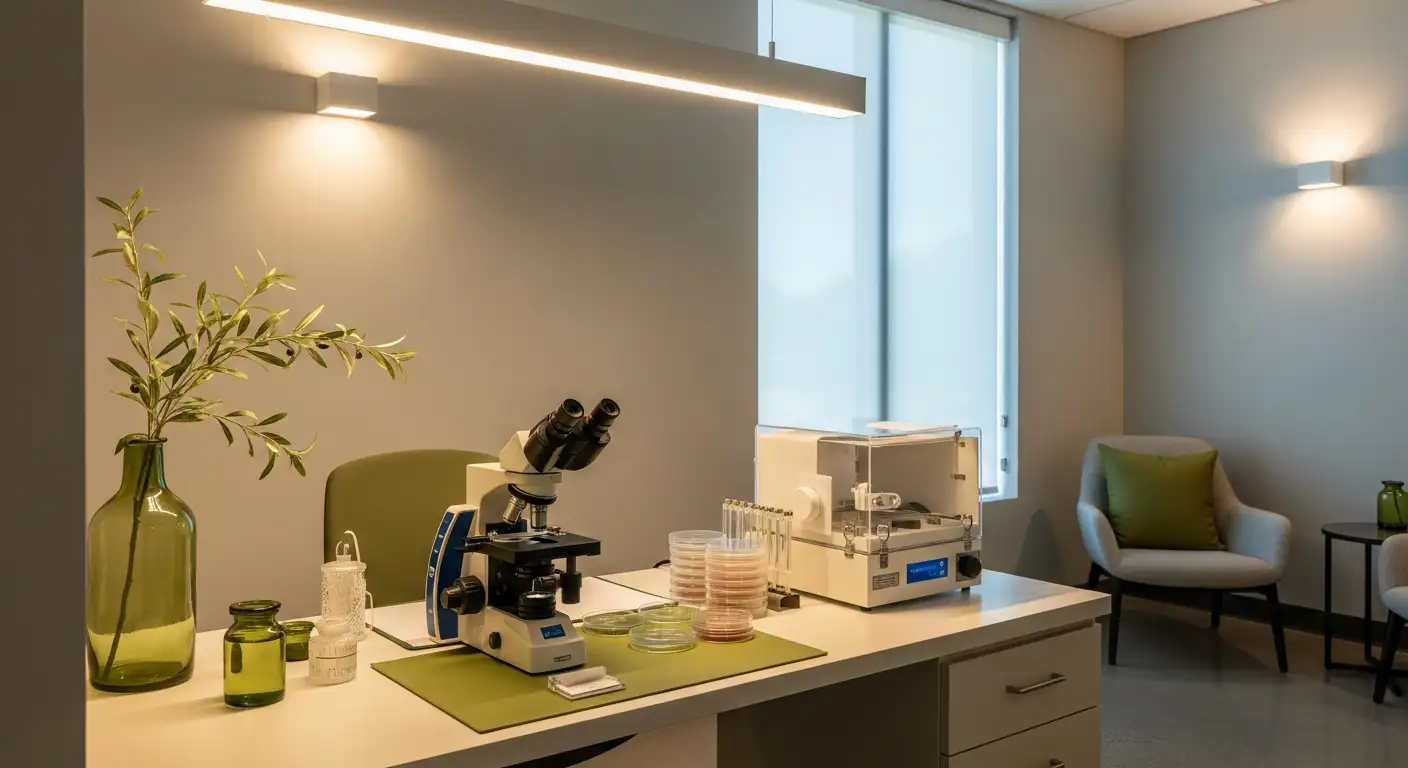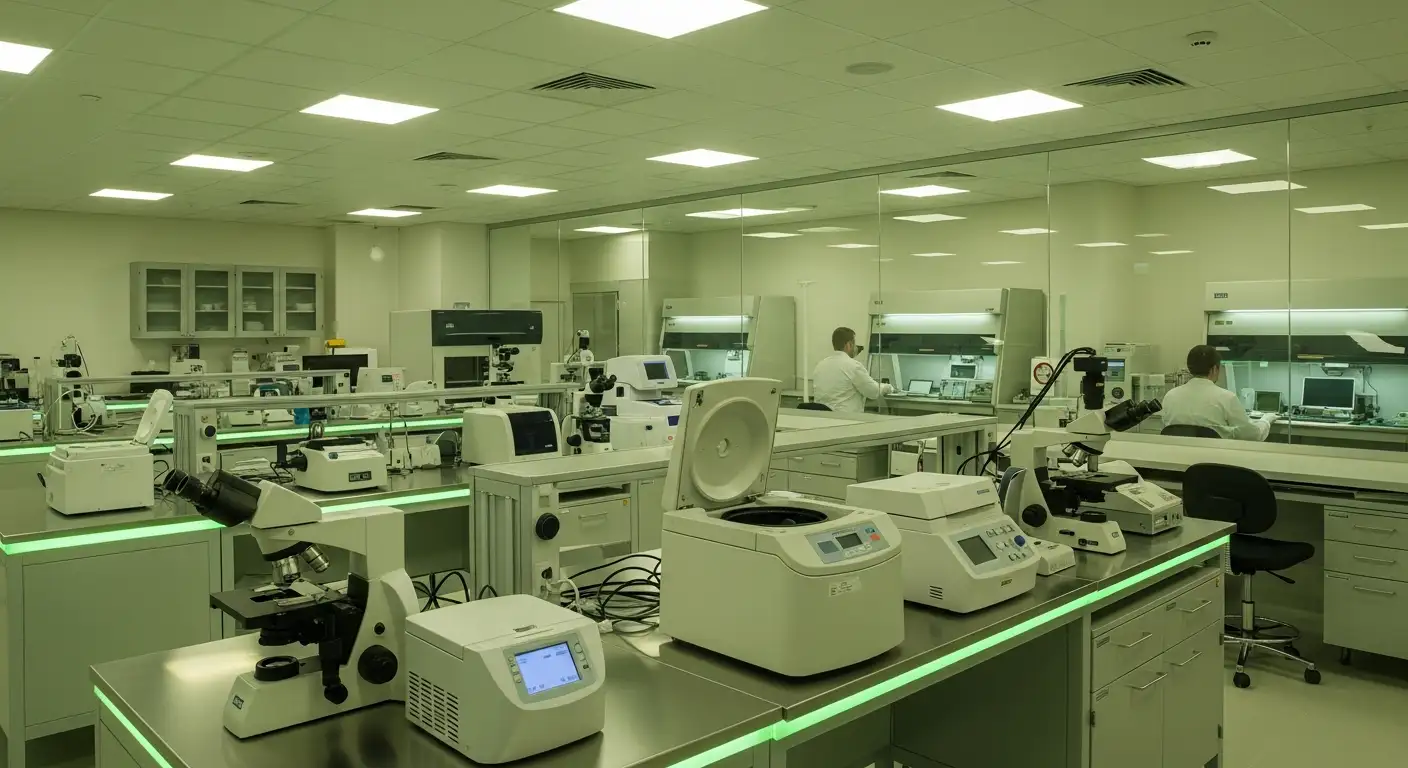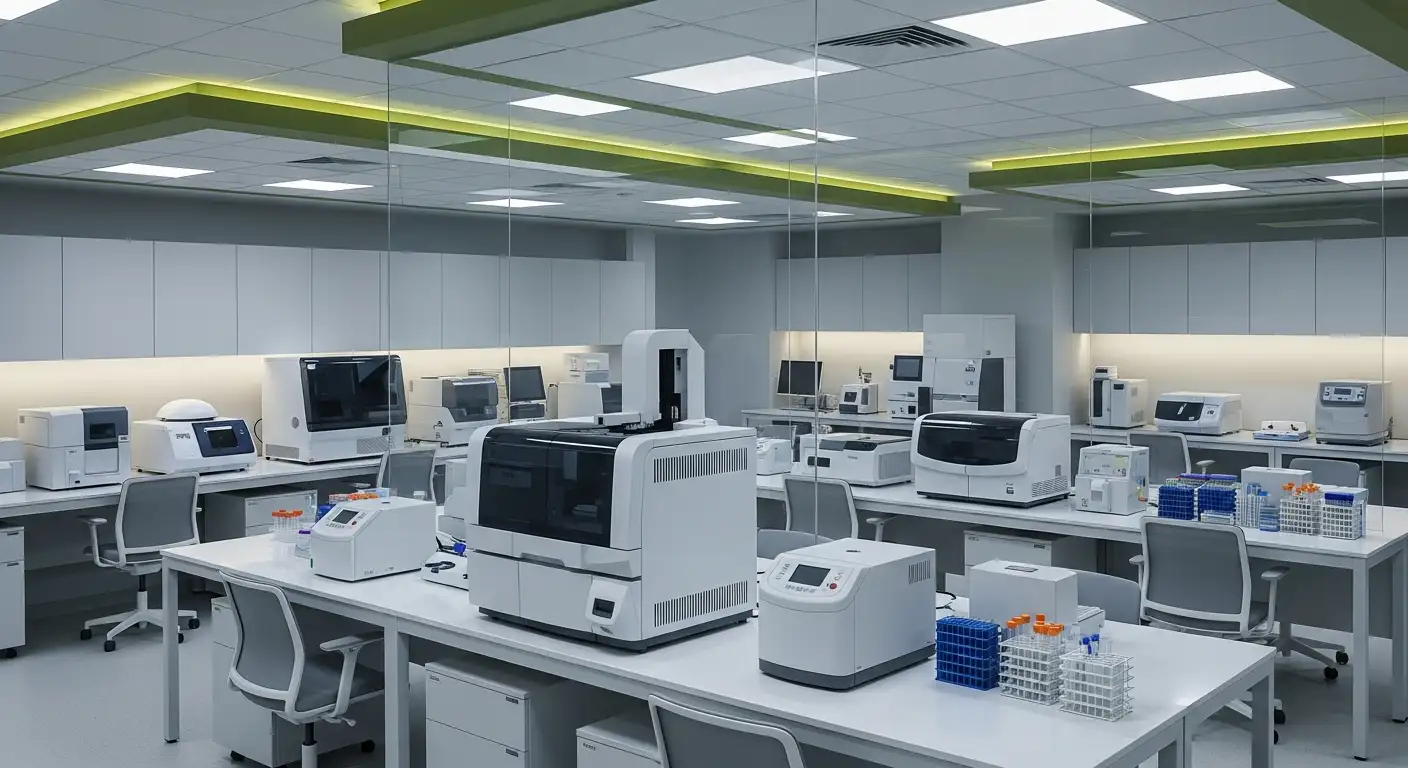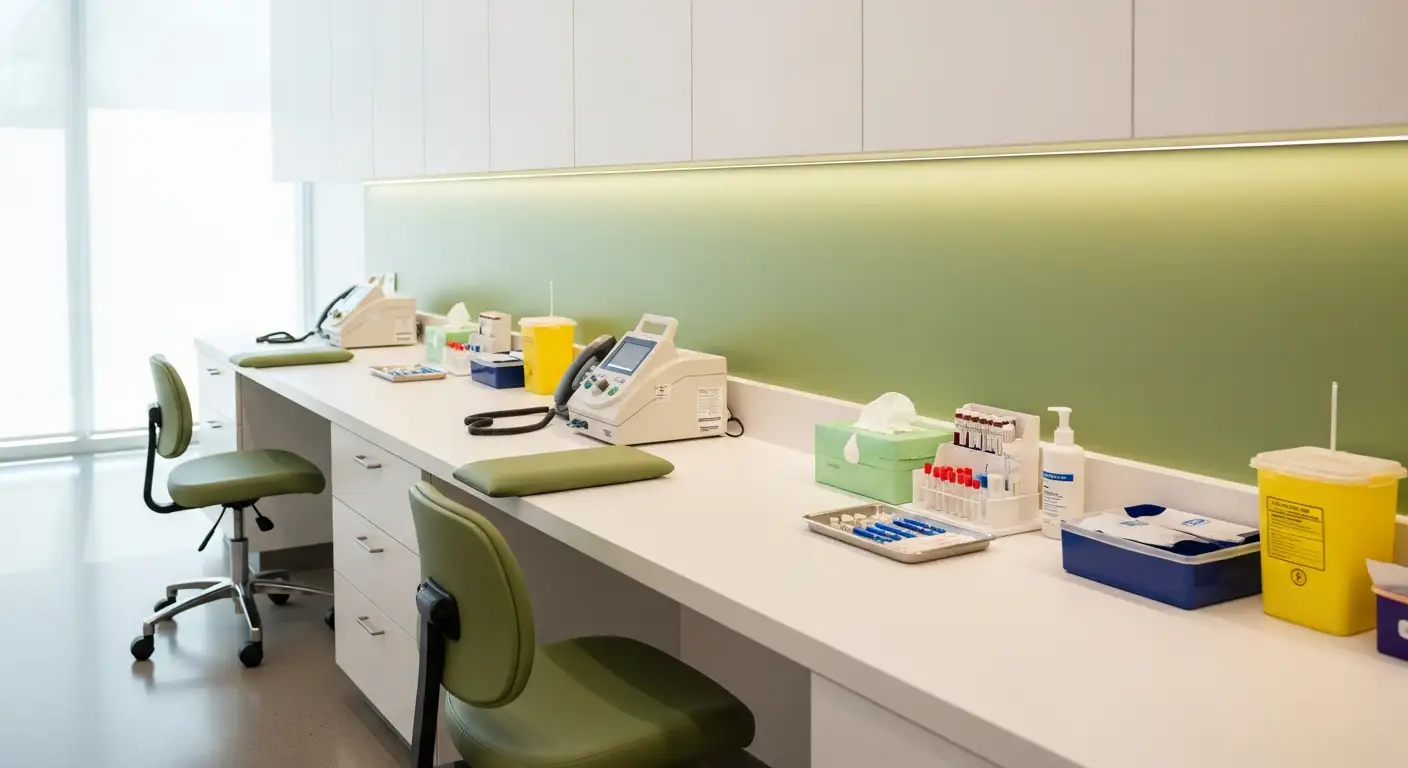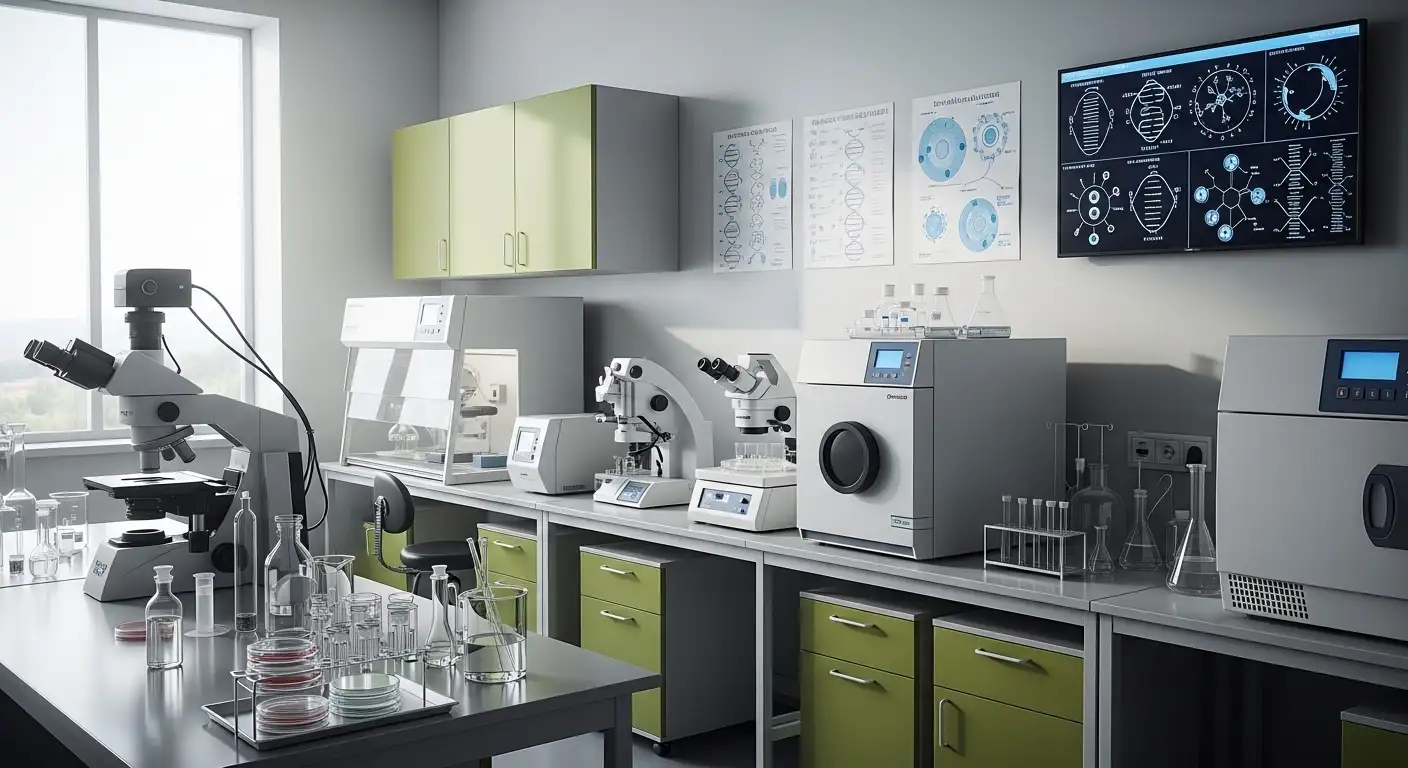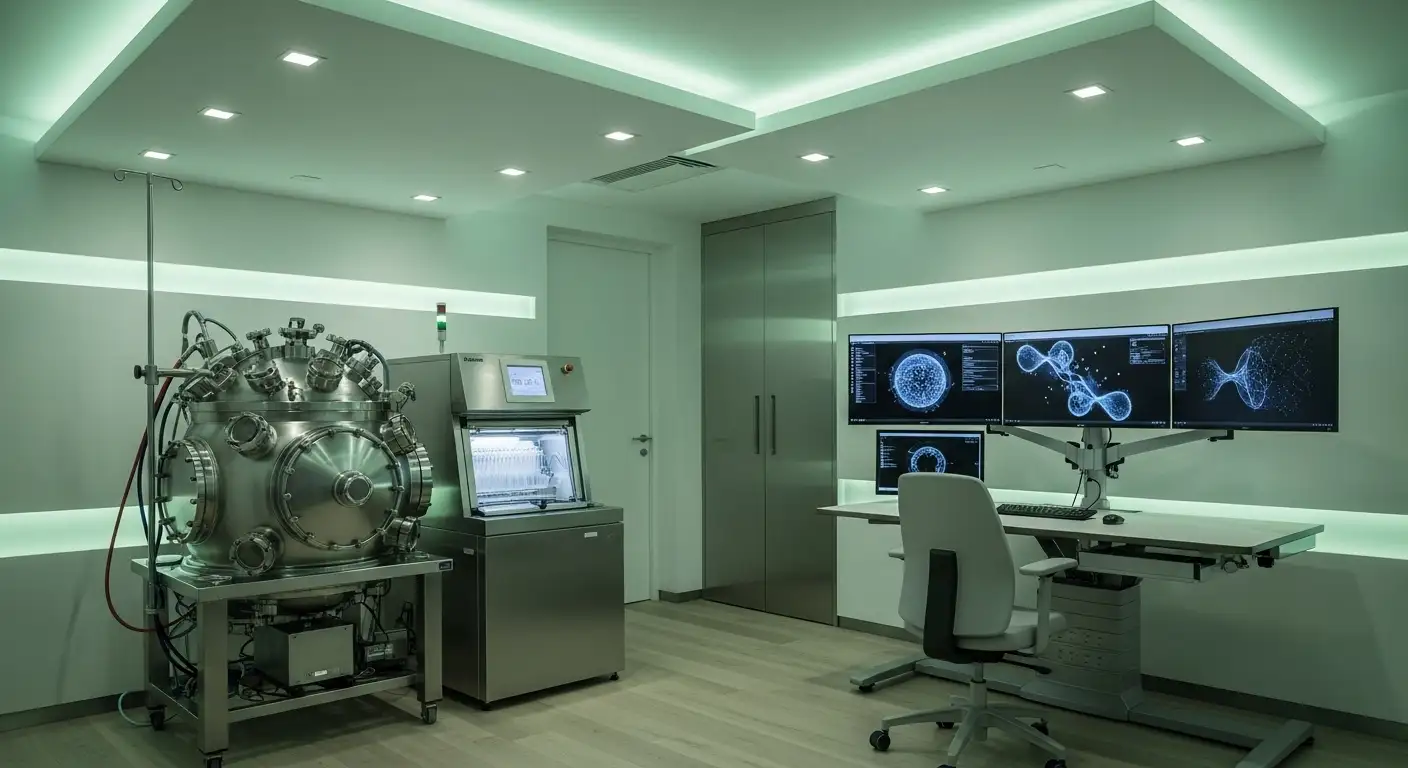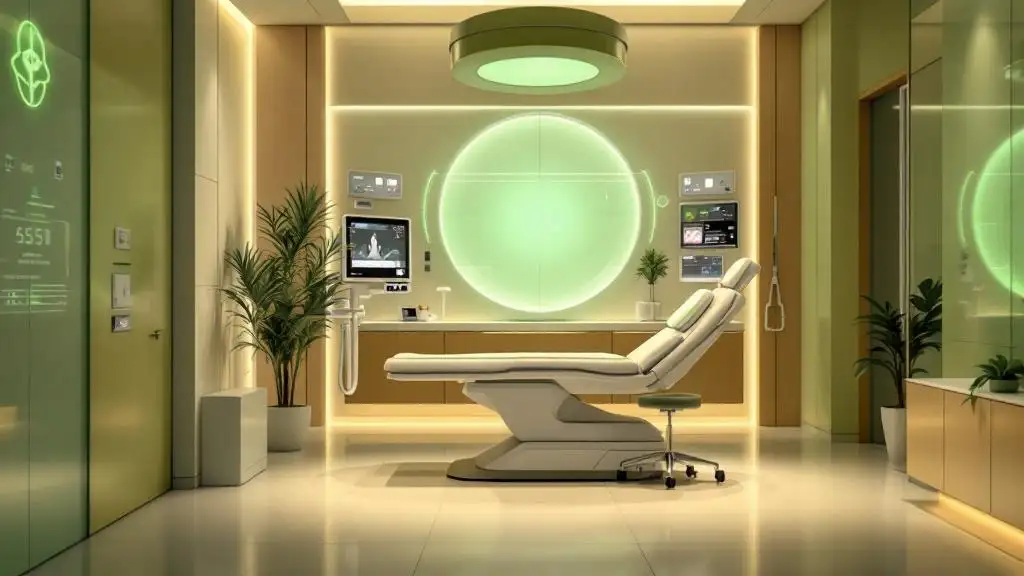What to expect during an embryo thaw
Navigating the Embryo Thaw Process: Key Insights for Prospective Parents

Understanding Embryo Thawing in Assisted Reproduction
Embryo thawing is a critical step in the assisted reproductive technology process, particularly for those undergoing in vitro fertilization (IVF) and frozen embryo transfer (FET). This procedure involves carefully warming cryopreserved embryos to reactivate their biological functions and prepare them for implantation. As embryo freezing and thawing techniques have advanced, success rates now rival those of fresh embryos, opening promising opportunities for individuals and couples seeking to conceive. This article explores what to expect during an embryo thaw, including the science behind the process, timing considerations, post-thaw care, and factors influencing success.
Medical Treatments Supporting Conception and Reproductive Health

What are the common medical treatments available to assist individuals and couples with conception and reproductive health?
Medical treatments to support conception and reproductive health are diverse, designed to address a variety of underlying causes of infertility. They broadly include fertility medications, surgical interventions, and assisted reproductive technologies.
Fertility Medications:
- Clomiphene citrate: Stimulates ovulation by encouraging the release of eggs from the ovaries.
- Gonadotropins: Hormones administered via injection to directly stimulate follicle development and ovulation.
- Metformin: Often used in cases of polycystic ovary syndrome (PCOS) to improve insulin resistance and hormonal balance.
These medications help regulate or induce ovulation and improve the chances of conception.
Surgical Interventions:
- Laparoscopy and hysteroscopy to correct structural problems such as blocked fallopian tubes, endometriosis, uterine fibroids, or varicoceles.
Surgery can restore normal anatomy and improve fertility potential in many cases.
Assisted Reproductive Technologies (ART):
- Intrauterine Insemination (IUI): Placement of washed sperm directly into the uterus to increase sperm availability near the egg.
- In vitro Fertilization (IVF): Fertilization of eggs outside the body followed by embryo transfer. IVF is the most effective treatment, especially after other methods fail.
Third-Party Reproduction and Fertility Preservation:
- Egg or sperm donation and surrogacy assist individuals or couples unable to conceive with their own gametes.
- Cryopreservation of eggs, sperm, or embryos allows fertility preservation before medical treatments that may impair fertility, such as chemotherapy.
Choosing the right approach requires a thorough fertility evaluation and consultation with specialists to create individualized treatment plans maximizing chances of success.
Role and Mechanism of Fertility Medications
How do fertility medications work to enhance reproductive health?
Fertility medications stimulate ovulation by influencing hormone levels that control the reproductive cycle. They encourage the ovaries to develop multiple follicles, increasing the chances of viable eggs for fertilization. These drugs regulate or boost the production of hormones such as follicle-stimulating hormone (FSH) and luteinizing hormone (LH), which are critical for follicular growth and egg maturation.
Types of medications used and their hormonal effects
Clomiphene citrate (Clomid or Serophene): An oral medication that prompts the body's own release of FSH and LH by blocking estrogen receptors in the brain.
Gonadotropins: Injectable hormones directly supplying FSH and LH to stimulate the ovaries.
GnRH agonists and antagonists: Used to control the timing of ovulation by preventing premature hormone surges during assisted reproduction.
Human chorionic gonadotropin (hCG): Triggers the final maturation and release of eggs during ovulation.
Progesterone supplements: Support the uterine lining after ovulation, enhancing embryo implantation and sustaining early pregnancy.
Together, these medications optimize ovulation timing, egg quantity and quality, and prepare the uterus for implantation, thereby improving the likelihood of conception in women facing fertility challenges.
In Vitro Fertilization (IVF): Process and Indications
What is in-vitro fertilization (IVF) and when is it recommended?
In-vitro fertilization (IVF) is a complex assisted reproductive technology where eggs are collected from a woman’s ovaries and fertilized with sperm outside the body in a laboratory. The resulting embryos are then transferred into the uterus to establish pregnancy. IVF is recommended for couples experiencing severe infertility issues such as blocked fallopian tubes, poor sperm quality, ovulation disorders, or when other fertility treatments have failed.
Stages of IVF from stimulation to embryo transfer
- Ovarian Stimulation: Daily hormone injections stimulate the ovaries to produce multiple mature eggs. Monitoring via ultrasound and blood tests ensures follicles develop correctly.
- Egg Retrieval: Approximately 34-36 hours after the trigger hormone, eggs are collected using an outpatient procedure under sedation.
- Fertilization: Eggs are fertilized with sperm through either conventional insemination or intracytoplasmic sperm injection (ICSI) in the lab.
- Embryo Culture: Embryos develop for 5 to 7 days, reaching the blastocyst stage before selection.
- Embryo Transfer: Selected embryos are inserted into the uterus via a catheter, typically 2-6 days after egg retrieval. Embryo transfer can involve fresh or cryopreserved embryos.
Potential risks and factors influencing success
Success rates vary, with women under 35 experiencing approximately 46.7% chance of pregnancy per IVF cycle, decreasing with age. Factors influencing success include embryo quality, maternal age, reproductive history, and the condition of the uterine lining.
Risks associated with IVF include ovarian hyperstimulation syndrome (OHSS), risks from sedation and egg retrieval such as infection or damage, and complications like multiple pregnancies or ectopic pregnancy. Careful medical supervision and individualized treatment protocols mitigate these risks and optimize outcomes.
Surgical Interventions in Reproductive Health
What Role Do Surgical Treatments Play in Addressing Reproductive Health Issues?
Surgical treatments are essential in managing reproductive health challenges by addressing physical causes of infertility and improving reproductive function. Common surgeries include hysteroscopy and laparoscopy, which allow doctors to visualize and treat inside the uterus and abdomen with minimal invasiveness.
Types of Fertility-Related Surgeries and Their Purposes
- Hysteroscopy: Used to remove uterine polyps, fibroids, or adhesions that may prevent implantation or cause miscarriage.
- Myomectomy: Surgical removal of uterine fibroids that can distort the uterine cavity.
- Laparoscopy: Employed to excise endometriosis, remove ovarian cysts, and repair damaged fallopian tubes or congenital uterine abnormalities.
- Tubal surgeries: To unblock or repair fallopian tubes that are damaged or blocked, enhancing the possibility of natural conception.
- Male reproductive surgeries: Procedures like vasectomy reversal and varicocelectomy restore sperm flow and improve sperm quality.
Benefits of Surgical Correction for Infertility
Surgical intervention often leads to restoring normal anatomy and function, which can increase the chances of natural conception and improve outcomes when combined with assisted reproductive technologies (ART). Many surgeries today are minimally invasive, reducing recovery time and risks. Though ART like IVF has reduced dependence on some surgeries, surgical correction remains a valuable option for certain infertility causes.
Overall, appropriate surgical treatments offer targeted solutions to correct anatomical abnormalities, relieve symptoms, and optimize reproductive health, ultimately providing hope and improved fertility prospects for many affected individuals.
Non-Medical Support Services for Conception
Are there non-medical services that support individuals and couples trying to conceive?
Yes, various non-medical services play an important role in supporting individuals and couples on their conception journey. These services often focus on the emotional and physical well-being of those trying to conceive alongside medical treatments.
Counseling and psychological support
Infertility and fertility treatments can be emotionally challenging. Counseling and therapy provide a space to address feelings such as anxiety, stress, or grief related to conception struggles. Psychologists or fertility counselors help clients develop coping strategies, improving mental health and resilience throughout treatment.
Nutritional and lifestyle guidance
Nutritional experts and lifestyle coaches offer tailored advice to optimize reproductive health. Guidance includes balanced diets rich in fertility-supporting nutrients, regular moderate exercise, and avoiding harmful habits such as smoking or excessive alcohol. Such interventions aim to improve the body’s readiness to conceive and support healthy pregnancy outcomes.
Stress management techniques
Mindfulness, meditation, yoga, and other stress reduction techniques are commonly recommended. These practices help lower cortisol levels, improve sleep quality, and foster mental calm, which indirectly supports fertility. Stress management programs may be offered individually or in group settings, complementing medical approaches.
While these non-medical services do not replace medical treatments, when combined they create a holistic support system enhancing overall well-being and potentially improving conception success rates.
Embryo Cryopreservation Techniques: Slow Freezing vs Vitrification
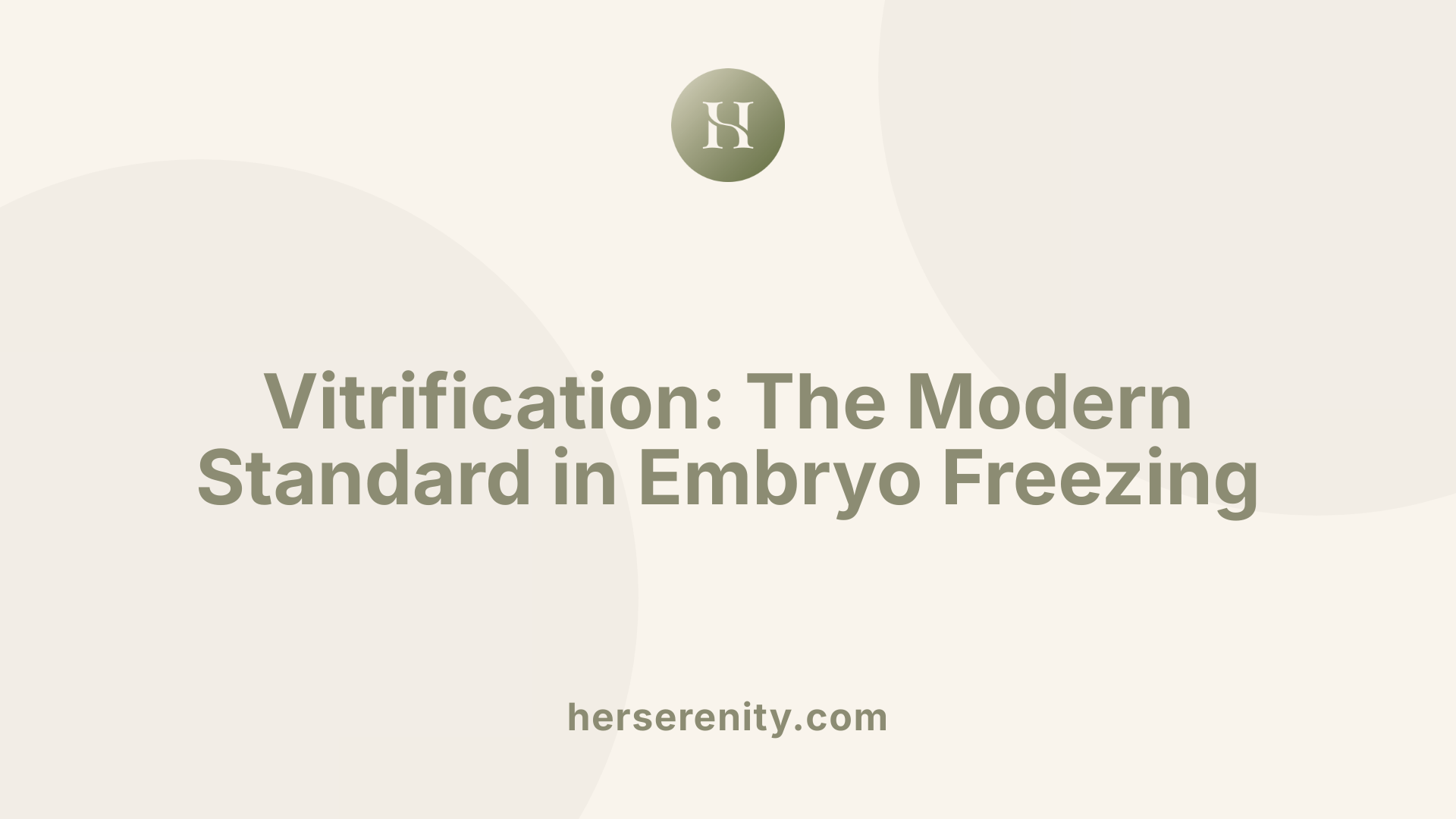
What Are Slow Freezing and Vitrification?
Embryo cryopreservation is essential in assisted reproductive technology, allowing embryos to be stored for future use. Two main methods are used: slow freezing and vitrification.
- Slow Freezing: This technique gradually lowers the temperature of embryos, allowing ice crystals to form slowly. Ice formation can damage cells but is controlled during the cooling.
- Vitrification: This newer technique avoids ice crystal formation by rapidly cooling embryos at ultra-fast speeds with a high concentration of cryoprotectants, effectively turning the embryo into a glass-like solid.
How Do These Methods Compare?
Slow freezing can take several hours and involves carefully timed steps to minimize ice formation. In contrast, vitrification is a quick process, taking about 15 minutes when thawing, requiring tools kept at physiological temperature (37°C).
Vitrification has been widely adopted in IVF laboratories because it achieves nearly 100% embryo survival after thawing, significantly higher than slow freezing. It does not negatively affect pregnancy success and is suitable for embryos preserved at various developmental stages.
Why Is Vitrification Preferred?
- Higher Survival Rates: Embryos survive the thawing process with more than 95% viability.
- Improved Pregnancy Outcomes: Studies show vitrification yields comparable or better pregnancy rates compared to slow freezing.
- Reduced Cellular Damage: Rapid freezing prevents damaging ice crystals, preserving embryo integrity and health.
- Efficient Workflow: Vitrification allows for faster processing and storage.
The superiority of vitrification has made it the standard cryopreservation method in modern fertility clinics worldwide, enhancing both the efficiency and success of IVF treatments.
The Science of Embryo Thawing and Devitrification

What is the process of warming embryos and removing cryoprotectants?
Embryo thawing, also known as embryo devitrification, involves carefully restoring embryos from their frozen state to conditions suitable for implantation. This process aims to recover the embryos' physiological temperature and to gradually replace the cryoprotectant molecules used during freezing with water, effectively reactivating their biological functions.
Embryos are typically frozen using vitrification, a rapid freezing method that avoids damaging ice crystal formation by using high concentrations of cryoprotectants and immediate cooling. During thawing, the embryos are warmed and pass through a series of solutions that decrease the cryoprotectant concentration stepwise, allowing the cells to safely rehydrate without damage. This controlled removal of cryoprotectants is crucial for maintaining cellular integrity and viability.
What are the time frames and temperature conditions for devitrification?
The devitrification process is notably fast and precise. It is usually completed within about 15 minutes, making it efficient for clinical use. The procedure requires specific tools and solutions maintained at 37°C, the normal human body temperature, to optimize recovery and maintain embryo quality.
Embryos are immediately assessed visually after thawing for structural integrity and signs of viability. Due to vitrification's success, more than 95% of frozen embryos survive the thawing process, with survival rates sometimes approaching 100%. This quick turnaround in controlled warm conditions minimizes stress on the embryos, increasing the likelihood of successful implantation and pregnancy outcomes.
Overall, the advancement in rapid warming techniques combined with precise temperature and solution management has made embryo devitrification a cornerstone of modern assisted reproductive technology.
Timing and Preparation for Embryo Thaw and Transfer
Scheduling thaw based on embryo development stage
The timing of embryo thawing is closely tied to the developmental stage of the embryo at the time of freezing. Embryos can be vitrified at various stages, commonly at cleavage (day 2 or 3) or blastocyst stage (day 5 or 6). Devitrification, the rapid warming of frozen embryos, typically takes place a few hours before the planned transfer to allow the embryo to recover physiological activity. This process is swift, generally completed within 15 minutes using tools maintained at 37°C to ensure optimal conditions for cellular reactivation.
Hormonal preparation for frozen embryo transfer (FET)
Frozen Embryo Transfer cycles require careful hormonal support to prepare the uterus for implantation. Physicians may prescribe estrogen and progesterone supplementation to mimic a natural menstrual cycle and promote endometrial receptivity. This hormone administration stabilizes the uterine lining and supports early pregnancy stages post-transfer. Alternatively, some treatment plans follow a 'natural FET' approach, where ovulation is monitored and triggered with human chorionic gonadotropin (hCG), aligning the embryo transfer with the body's natural cycle.
Endometrial preparation protocols
Preparing the endometrium is crucial for implantation success. Protocols usually span 2 to 4 weeks and are tailored to individual patient needs. This period ensures optimal thickness and receptivity of the uterine lining. Estrogen is administered initially to thicken the endometrium, followed by progesterone to induce the secretory phase conducive for embryo implantation. Tailoring the timing and dosage of these hormones increases the chances of successful implantation and pregnancy. Monitoring through ultrasound and hormonal assays guides the appropriate timing of embryo transfer within these protocols.
This structured coordination in thaw timing and uterine preparation maximizes embryo viability and implantation potential, reflecting advances in reproductive technology that closely align clinical procedures with physiological processes.
Frozen Embryo Transfer (FET): Procedure and Benefits

Advantages of FET over fresh embryo transfer
Frozen Embryo Transfer, or FET, involves thawing embryos created in a previous IVF cycle and transferring them into the uterus at an optimal time. FET offers notable benefits compared to fresh embryo transfer. It provides flexible timing for both patients and clinics, allowing better scheduling around personal and medical factors. Success rates with FET are comparable or sometimes even higher than with fresh transfers. This can be partly attributed to the ability to optimize the uterine environment through hormone preparation, enhancing endometrial receptivity. Additionally, FET eliminates the need for ovarian stimulation at the time of transfer, reducing the risks associated with hormone medication, such as ovarian hyperstimulation syndrome.
Hormonal and natural cycle supports
Preparing for FET commonly involves two approaches to ready the uterine lining for embryo implantation. The first is a hormonally supported cycle, where estrogen and progesterone are administered to mimic the natural hormonal environment exactly, thereby preparing the endometrium appropriately over 2 to 4 weeks. The second is a natural cycle FET, which tracks a woman’s natural ovulation cycle and uses a trigger hormone (hCG) to time the transfer with natural ovulation. Both approaches aim to align the embryo transfer with the ideal window for implantation, usually about 6-7 days post-fertilization when the embryo reaches the blastocyst stage. Individualized preparation schedules are tailored to optimize the uterus’s readiness for receiving the embryo.
Success rates and outcome factors
Success rates for FET vary mainly by maternal age and embryo quality. Women under 35 years typically achieve success rates around 60%, while rates decline with advanced age, dropping to roughly 20% for women over 40. Factors influencing outcomes include the health and grading of the embryo, the quality of cryopreservation and thawing techniques (with vitrification offering over 90% survival rates), and the uterine environment. Care after embryo transfer, including continuation of fertility medications and lifestyle management, also supports implantation success. Overall, FET is a safe and effective option that broadens opportunities for achieving pregnancy, especially with improvements in cryopreservation and hormonal support protocols.
Post-Thaw Embryo Assessment and Viability
Criteria for evaluating embryo quality after thawing
After embryos are thawed, they undergo careful assessment to determine their viability for transfer. Embryologists examine several factors including the embryo's visual appearance, structural integrity, and membrane condition. Signs of cellular damage or irregular shape can indicate reduced viability.
Important indicators include intact cell membranes and the degree of blastomere survival (cells within the embryo). Embryos showing signs of rehydration and resumed cellular function after thawing usually have better chances for implantation. This post-thaw recovery is particularly effective when vitrification, which prevents ice crystal formation, has been used.
Survival rates and factors influencing viability
Embryo survival rates post-thaw are generally high, especially with modern vitrification techniques, often exceeding 90%. The method of freezing plays a major role—vitrification provides quicker thawing with better preservation of cellular integrity versus slow freezing.
Several factors influence survival and implantation success, including:
- Initial quality of embryos before freezing
- Precision in thawing and handling techniques
- Storage conditions during cryopreservation
- Stage of embryo development at freezing
Embryos thawed using vitrification require only 1-3 minutes for devitrification, minimizing damage due to temperature fluctuations.
Embryo viability after thawing is crucial for implantation success and ultimately for pregnancy outcomes. Proper assessment ensures only the most viable embryos are selected for transfer, enhancing the chances of a successful pregnancy.
Post-Transfer Care Recommendations
Continuation of Fertility Medications
After embryo transfer, patients are commonly advised to continue fertility medications such as progesterone and estrogen. These hormones support the uterine lining, enhancing the chances of successful implantation and early pregnancy maintenance. The duration and dosage are personalized based on individual response and medical guidance.
Lifestyle Adjustments and Activity Restrictions
Patients should maintain a healthy lifestyle during the post-transfer period, which includes balanced nutrition and stress management. It is recommended to avoid vigorous physical activity and sexual intercourse temporarily, especially if ovaries remain enlarged from stimulation. However, routine day-to-day activities can usually be resumed, as prolonged bed rest after transfer has not shown benefits and may even lower live-birth rates.
Monitoring and Pregnancy Testing Timelines
Pregnancy testing is typically performed about 9 to 14 days following embryo transfer through blood tests measuring hCG levels to confirm implantation success. Additionally, early ultrasounds may be scheduled to track pregnancy progression. Close observation during this critical time helps address any complications promptly and ensures optimal care for patients.
Factors Influencing Success of Embryo Transfer After Thaw
Maternal Age and Embryo Quality
Maternal age remains one of the most significant factors affecting the success of embryo transfer after thawing. Younger women, particularly those under 35 years, tend to have higher success rates—around 60%—compared to women over 40, whose success rates drop to about 20%. This decline is largely due to diminished egg and embryo quality, which directly influences implantation potential and pregnancy outcomes.
Endometrial Receptivity and Cryopreservation Quality
The readiness of the endometrium, or uterine lining, is crucial for implantation. Endometrial preparation is typically tailored and lasts between 2 to 4 weeks, using hormonal support involving estrogen and progesterone to mimic the natural cycle. Cryopreservation quality, particularly the method of freezing and thawing, also plays a vital role. Modern vitrification techniques have dramatically improved embryo survival after thawing, often exceeding 90%, preserving embryo structure and viability.
Importance of Clinical Expertise and Technique
The skill of the clinician performing the embryo transfer is another critical element. Ultrasound guidance during transfer, use of a soft catheter, and precise placement of the embryo in the uterine cavity improve pregnancy and live birth rates significantly. Proper handling post-thaw, rapid warming at 37°C, and prompt transfer are essential for maintaining embryo viability. Moreover, success depends on thorough embryo assessment after thawing to ensure only healthy embryos are transferred.
Overall, successful embryo transfer after thaw hinges on a combination of maternal biological factors, optimal preparation and cryopreservation protocols, and the proficiency of the clinical team performing the procedure.
Embryo Freeze-All Strategy and Its Impact on Pregnancy Outcomes
Why Is the Freeze-All Approach Used?
The freeze-all strategy refers to the practice of freezing all viable embryos generated during an IVF cycle instead of performing a fresh embryo transfer immediately. This approach is increasingly popular due to advances in cryopreservation techniques, particularly vitrification, which allows embryos to survive freezing and thawing with high rates of success.
One of the main reasons to employ freeze-all is to avoid the effects of ovarian stimulation drugs on the uterine lining. Hormonal medications used during IVF can sometimes lead to a less receptive endometrium at the time of fresh transfer, reducing the chances of implantation.
How Does Freeze-All Benefit Endometrial Receptivity and Pregnancy Rates?
By freezing embryos and postponing transfer to a later cycle, the uterine environment can return to a more natural, optimal state. This timing can enhance endometrial receptivity, improving the likelihood that the embryo implants successfully.
Clinical evidence shows that pregnancy success rates with frozen embryo transfers (FET) are comparable to or even exceed those of fresh transfers. The freeze-all approach also reduces risks associated with ovarian hyperstimulation syndrome (OHSS) by separating stimulation from embryo transfer.
Overall, utilizing freeze-all can lead to more favorable pregnancy outcomes by optimizing the conditions for embryo implantation, contributing to higher live birth rates.
| Aspect | Description | Impact on IVF Outcome |
|---|---|---|
| Hormone Stimulation | Can impair endometrial receptivity during fresh transfer | Freeze-all bypasses this effect |
| Timing of Transfer | Postponed to natural or hormonally prepared cycle | Allows for better synchronization |
| Pregnancy Rates | Comparable or higher with frozen transfers | Improved implantation success |
| Risk of OHSS | Reduced by avoiding fresh transfers post-stimulation | Safer treatment protocol |
Long-Term Safety and Outcomes of Vitrified Embryos
Impact of vitrification on implantation and child health
Vitrification, a rapid cryopreservation technique, has revolutionized embryo freezing with survival rates approaching 100%. Unlike slow freezing, vitrification avoids ice crystal formation, thereby preserving cell integrity during the freezing and thawing processes.
Studies have consistently shown that vitrification does not negatively influence implantation rates, pregnancy prognosis, or the subsequent health of children born from vitrified embryos. In fact, implantation generally occurs 6 to 7 days post-fertilization at the blastocyst stage regardless of embryo freezing status. This underlines the efficacy of vitrification in maintaining embryo viability comparable to fresh embryos.
Healthcare data reveal no increase in birth defects or developmental disorders in offspring from vitrified embryos, even after decades of storage. This establishes vitrification as a reliable and safe method for embryo preservation.
Storage duration considerations and safety data
Embryos can be safely stored for extended periods, with some facilities maintaining viable frozen embryos for 10 years or longer without compromising embryo quality. The cryoprotectants used and liquid nitrogen storage conditions ensure that cellular structures remain intact through prolonged preservation.
Long-term follow-up confirms that the quality of embryos after thawing remains high, with over 90% survival rates, particularly when vitrification protocols are meticulously followed. Moreover, the freeze-all strategy—freezing all viable embryos in an IVF cycle—capitalizes on vitrification to optimize endometrial receptivity, sometimes improving pregnancy outcomes.
The enduring safety profile and effectiveness of vitrified embryos continue to support their use in assisted reproductive technologies, providing flexibility and hope for individuals undergoing fertility treatments.
Advances in Embryo Thawing Technology and Laboratory Practices

Technological Improvements Increasing Survival Rates
Embryo thawing methods have significantly evolved, especially with the advent of vitrification. This rapid freezing technique prevents ice crystal formation, a problem common in slow freezing. As a result, embryo survival rates post-thaw now exceed 90%, with some IVF labs reporting near 100% survival. The process itself is swift; devitrification completes in about 15 minutes, requiring precise temperature control at 37°C. Careful rehydration and removal of cryoprotectants allow embryos to regain cellular function, directly improving the chances of successful implantation.
Ultrasound Guidance and Transfer Catheter Innovations
Embryo transfer success relies heavily on precise placement within the uterus. Ultrasound guidance during embryo transfer is strongly supported by multiple randomized controlled trials, showing improved pregnancy and live-birth rates. Use of a soft embryo transfer catheter is recommended over firmer types, as it reduces trauma and facilitates easier placement. Optimal embryo placement is achieved by positioning the embryo in the upper or middle uterine cavity, more than 1 cm away from the fundus. These precise techniques lead to better implantation outcomes.
Protocols Improving Implantation Success
Laboratory and clinical protocols have been refined to maximize embryo viability and implantation potential. Routine practices include removing cervical mucus before transfer to ensure cleanliness, immediate withdrawal of the catheter after embryo release to minimize uterine disturbance, and avoiding bed rest post-transfer, as evidence suggests it might reduce success rates. Conversely, no strong evidence supports analgesics, anesthesia, or traditional medicine during transfer to improve outcomes. Together, these protocols promote a streamlined, less invasive procedure that supports embryo implantation and increases chances of pregnancy.
| Aspect | Improvement/Technique | Impact on Outcomes |
|---|---|---|
| Embryo Freezing & Thawing | Vitrification & rapid devitrification | Near 100% embryo survival rates |
| Transfer Guidance | Ultrasound-guided transfer | Enhanced accurate embryo placement and live births |
| Catheter Selection | Use of soft catheter | Reduced tissue trauma, higher implantation rates |
| Transfer Protocols | Immediate catheter withdrawal; mucus removal | Improved implantation success, reduced complications |
Preparing for Success: Embracing the Embryo Thaw Journey
Embryo thawing represents a pivotal moment in assisted reproductive technologies, bridging the gap between freezing and the hopeful beginning of pregnancy. Advances such as vitrification and refined thawing protocols have dramatically improved embryo survival rates, enabling flexible timing and optimizing conditions for embryo transfer. Careful coordination of hormonal support, surgical precision during transfer, and attentive post-transfer care further enhance the prospects of success. Understanding the process, potential challenges, and supportive measures empowers individuals and couples to approach embryo thawing with confidence and informed expectations. As technology and medical expertise continue to evolve, the journey through embryo thawing remains a cornerstone of fertility treatments, illuminating the path toward building families.
References
- Embryo thawing: everything you need to know about ...
- FET-IVF: Frozen Embryo Transfer Tips, Timelines and ...
- Freezing Embryos
- In vitro fertilization (IVF)
- IVF Process Day by Day - In Vitro Fertilization Steps
- IVF (In Vitro Fertilization): Procedure & How It Works
- Embryo Thaw Specialist Near Me in Provo, UT and North ...
- Performing the embryo transfer: a guideline (2017)



